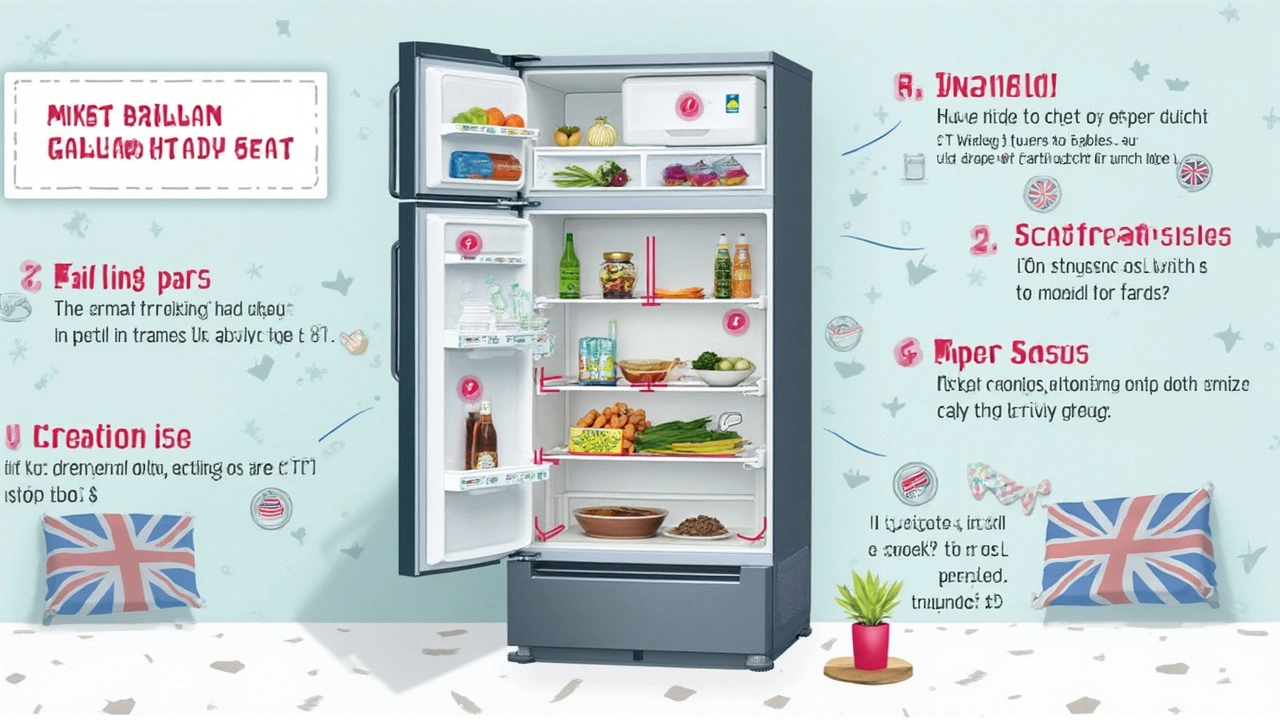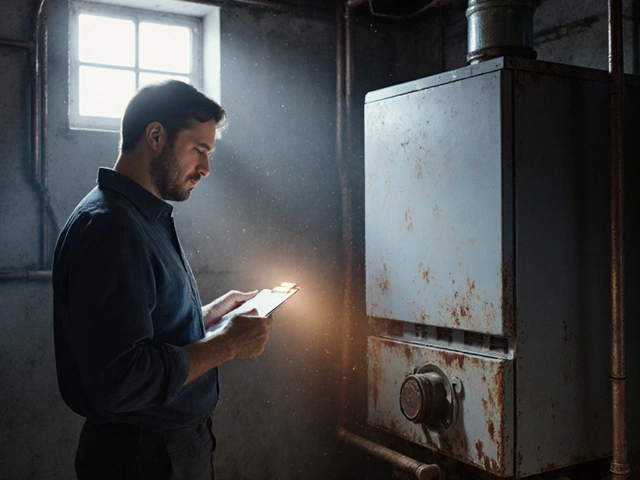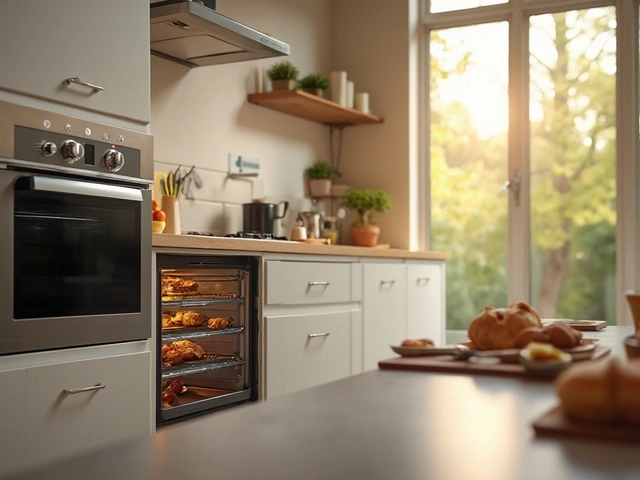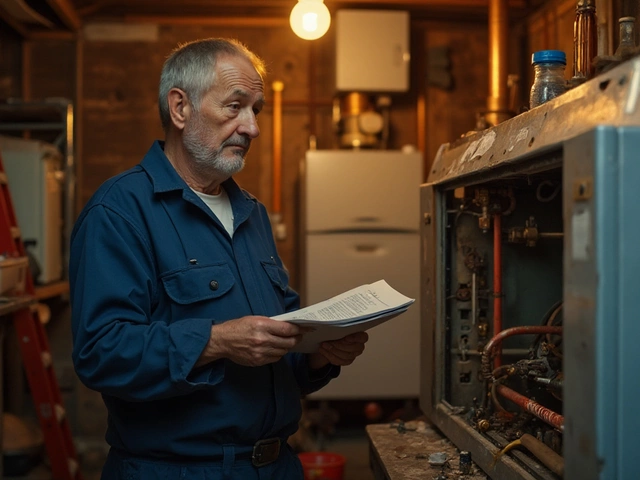So your fridge just isn’t keeping things cold and you're wondering what went sideways. You're not alone—fridge problems are pretty common, and nobody wants to deal with soggy vegetables or spoiled milk.
Most times, it’s not some mystery part deep in the guts of the machine. Actually, there’s a short list of usual culprits. The compressor, thermostat, condenser coils, or the door seal—they fail the most, and a lot of newer models aren’t immune either. Sometimes, it’s as basic as a worn-out gasket making your fridge work overtime.
If you know what usually fails, you can catch issues before they snowball. Just knowing which parts are most fragile can save you from tossing out your groceries or paying for an expensive (and sometimes pointless) repair visit. Stick around, and you’ll pick up tips for spotting the trouble and some simple hacks regular people use to keep their fridges out of the danger zone.
- The Usual Suspects: Parts That Break Most
- Symptoms and Warning Signs
- Quick Checks Before Calling for Repair
- Preventive Tips for a Healthier Fridge
The Usual Suspects: Parts That Break Most
Here’s the deal: a fridge is basically a few key parts doing all the real work. When things go wrong, it’s usually these guys causing the trouble. If you know their names—and what they do—you’ll already be ahead of the game.
- Compressor: This is the engine of your fridge. It pumps refrigerant around and keeps things cold. If it stops working, the fridge just becomes a poorly-sized cupboard. Compressors can fail from wear, power surges, or just old age. According to data from appliance repair companies, about 10-15% of all fridge breakdowns are from compressor issues.
- Thermostat: This is what tells your fridge when to cool. A bad thermostat means the fridge either turns into an ice box or doesn’t cool at all. They’re cheap to replace but annoying to diagnose because the symptoms can look like a lot of other problems.
- Condenser Coils: Dust and pet hair love to stick here. Clogged coils make your fridge work harder and hotter, which often leads to breakdowns. This is an easy DIY thing—you just need a brush and five minutes.
- Evaporator Fan: This sneaky part moves cold air around inside. If it fails, you’ll notice one section getting warm and the other still cold. Weird noises from inside the freezer often point to a dying fan motor.
- Door Gasket: It might sound boring but when this rubber seal wears out, cold air seeps out, and your fridge has to crank nonstop to keep up. A simple visual check for cracks or a loose fit tells you if it’s time for a new one.
Want to see how common these problems are? Here’s a quick look at what repair pros report:
| Part | Common Failure Cause | % of Service Calls |
|---|---|---|
| Compressor | Wear, power surge | 12% |
| Thermostat | Faulty sensor, stuck relay | 18% |
| Condenser Coils | Dust, pet hair | 22% |
| Evaporator Fan | Motor failure | 17% |
| Door Gasket | Wear, cracking | 20% |
| Other | Light bulb, shelf issues | 11% |
The bottom line? The big stuff in your fridge repair checklist is usually simple and cheap to fix—if you catch it early. Checking these usual suspects is where you should always start.
Symptoms and Warning Signs
If you think your fridge is acting up, it probably is. But sometimes the clues aren't obvious—until you notice your yogurt's warm or ice cream is soup. Knowing the warning signs can save your food and your wallet.
Here are dead giveaways that something's wrong:
- Fridge repair needed if it's not getting cold enough, even at the ideal setting (usually between 37°F and 40°F for the fridge, 0°F for the freezer).
- Puddles or leaks under or inside the fridge show you might have a clogged drain or busted seal.
- Loud noises—think banging, clicking, or humming—often come from the compressor or fans working too hard.
- Constant cycling (fridge turning off and on more than usual) usually means trouble with the thermostat or dirty coils.
- Light doesn't turn on when you open the door, which can actually impact temperature and cooling if the switch is stuck.
A review by Consumer Reports backs this up:
"Undercooling, puddling, and odd new sounds are classic signs something is off, and ignoring them is a top reason for expensive appliance breakdowns." – Consumer Reports, 2024
Wondering just how common these issues get? Take a look at what repair techs find most often:
| Problem | % of Occurrences |
|---|---|
| Not Cooling Properly | 42% |
| Strange Noises | 23% |
| Leaks or Puddles | 18% |
| Light Won't Turn On | 9% |
| Door Seal Problems | 8% |
If you spot these symptoms, don’t wait. A quick check or minor fix now means you might avoid a big repair bill or, worse, a fridge full of ruined groceries.

Quick Checks Before Calling for Repair
Before you reach for the phone and call a fridge repair pro, there are a few easy things you can do on your own that actually solve a lot of issues. Seriously, you’d be surprised how many fridge repair calls end with, “It was just a loose plug.” Here’s a checklist to run through:
- Check your power: Is the fridge plugged in all the way? Sometimes these big appliances work themselves out of outlets, or a breaker trips during a storm. Make sure your outlet is working by plugging in a different device, like a phone charger or a lamp.
- Temperature settings: Did someone mess with the fridge or freezer dial by mistake? Make sure neither compartment is set too warm (keep the fridge at or below 40°F, freezer at 0°F).
- Door seals and closing: Gently run your hand around the door. If you feel cool air coming out, your gasket (that rubbery lining) might not be sealing tight. If the door isn’t closing all the way, look for food blocking it or a buildup of dirt on the seals.
- Condenser coils: Dirty coils make your compressor work overtime. You’ll usually find these on the back or bottom of your fridge. Unplug the fridge, then use a coil brush or vacuum cleaner. Regular cleaning can cut the chance of compressor problems by up to 70% according to appliance pros.
- Airflow: Is your fridge packed to the brim? Air needs space to circulate. Sometimes, “my fridge is warm” just means “there’s too much stuff near the vents.”
Got weird noises? Check if the fridge is level. Uneven fridges can vibrate and thrum, making you think something’s broken when it’s just off-kilter. Adjust the feet underneath until it sits flat.
| Problem | Quick Fix | How Often It Works |
|---|---|---|
| Not Cooling | Adjust thermostat, clean coils, check door seal | Nearly 40% of cases (Consumer Reports) |
| No Power | Reset breaker, check outlet | Over 30% of calls end up being a power issue |
| Strange Noise | Level fridge, clear drip pan, check for loose items | Almost 50% solved quickly at home |
If these fixes don’t work, that’s when you call a pro. But honestly, a lot of fridge headaches get solved in the time it takes your coffee to brew. If you can handle a screwdriver and a vacuum, you've already got most of what’s needed right at home.
Preventive Tips for a Healthier Fridge
If you want your fridge to last and not eat up your cash in repairs, a few easy routines can go a long way. Skipping basic care is one of the main reasons people run into trouble—so here's what you can actually do to dodge the nastiest breakdowns.
- Clean condenser coils every six months: Dirty coils make your fridge work harder, burn more energy, and heat up. Pull the fridge out, unplug it, and use a coil brush or vacuum to clear out dust and bits of food. Even just two minutes here can seriously lower your risk for breakdowns.
- Check the door seal (gasket): Make sure it’s clean and soft, or you’ll end up cooling your kitchen instead of your food. If the seal feels hard or you find crumbs in the grooves, use warm soapy water and wipe them out. Dollar bill won’t stay put if your door’s not sealing—so test it by closing the bill in the door and see if it slides out easily. If it does, your seal needs attention.
- Don’t overpack or underfill: If you stuff the fridge, cold air can’t move. But if it’s empty, it works too hard to keep cold. As weird as it sounds, keeping it about two-thirds full is the sweet spot.
- Set the right temperature: The FDA recommends keeping your fridge at or below 40°F (4°C) and your freezer at 0°F (-18°C). Anything higher, and bacteria love it. Use a cheap fridge thermometer to double-check because built-in settings can be off.
- Defrost the freezer if you see frost building up: Too much frost messes with air flow. Most modern fridges are frost-free, but some older models aren't. If yours isn't, unplug and let it thaw once a year.
If you’re wondering how much energy you can save, here’s a quick look:
| Basic Maintenance Task | Average Energy Savings (%) |
|---|---|
| Cleaning condenser coils | Up to 30% |
| Proper door sealing | 10–20% |
| Keeping correct temperature | 5–10% |
Most fridge repair calls could have been dodged with these steps. Regularly checking up on your fridge pays off in saved food, fewer breakdowns, and lower power bills.





